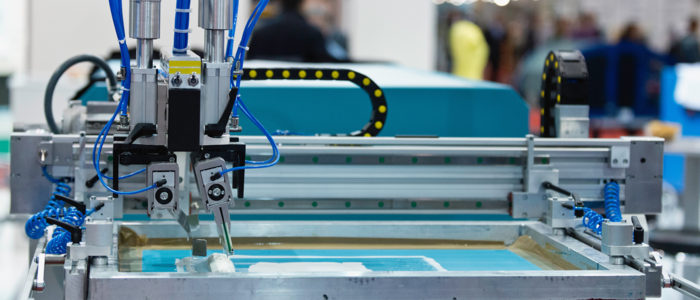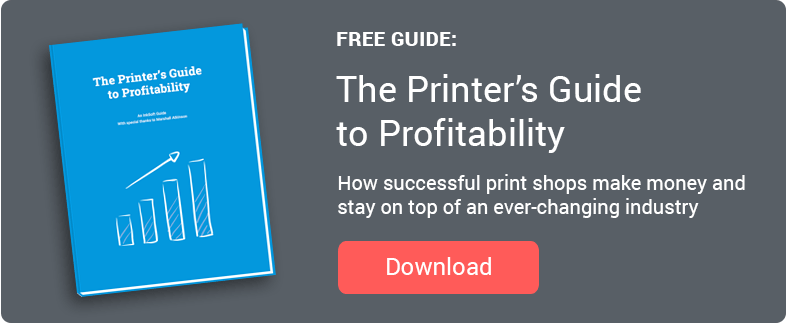Saving money is like going to the gym: It’s not exactly fun, but you feel good about yourself afterward and it pays off in the long term.
Today’s post is an excerpt from our free e-book “The Printer’s Guide to Profitability,” created with the help of print shop guru Marshall Atkinson. Get the e-book here!
The right tool for the job
The equipment you use in your shop will always determine your overall performance. A shop with only manual presses will print less than a shop with automatics. A shop with a fourteen color press can print more complicated jobs than one that just has a six color. It’s common sense.
However, look at the tools you are using and the jobs you are producing every day. What’s the average print run for jobs in your company? Are you putting that thirty five-piece, two-color job on an automatic because you don’t have anywhere else to put it? An automatic press can print much faster than a manual, but it also uses more labor, and has a higher opportunity cost associated with it. In other words, for every manual- sized job you are running on the auto, that’s one less large job you aren’t printing on it. Maybe it’s time to look at getting another manual press instead.
Before you buy, consider a second shift
As your business grows, it is important to tie your equipment thought process with your production needs. If you can, try staffing a second shift before investing in other equipment. Using your equipment to its fullest potential will save the thousands of dollars on a new machine.
Buying new equipment
If you do go shopping for new print shop equipment, think about the jobs you are printing now, and also the ones that you have been trying to land. What do you need to complete them efficiently? Always buy the best equipment you can afford. If you want a better press and can’t buy new, consider buying a used model. There are plenty of used equipment dealers out there. Also, don’t forget that new printers means you’ll need added screens, platens, people to run the press, and maybe even an upgraded electrical system to handle a more rigorous load.
Maintenance
An easy area to cut costs is to build a solid preventative maintenance program in your shop. This will prevent loss from machines breaking down and costly repairs. Routine checks need to be documented with dates, notes of what you found, and any general descriptions of the service performed. Do this on all mechanical equipment you own. Don’t forget to change the filters, grease the bearing, replace worn parts, keep things clean and give these machines the loving care they deserve.
If you aren’t mechanically inclined, be sure to schedule a technician at regular intervals to make sure things are running smoothly. Often you can get an annual service plan and extended warranty when you purchase the equipment. These experts can also help you repair, rather than replace, older equipment. Mechanical devices wear out with use, and problems will occur. Stay on top of them and replace the worn parts, and they will serve you for a long time.
Get more cost-cutting advice
We’ve put our heads together with industry superstar Marshall Atkinson to write the definitive print shop guide to all things profit. Want to learn how successful print shops grow? Snag your free copy:



